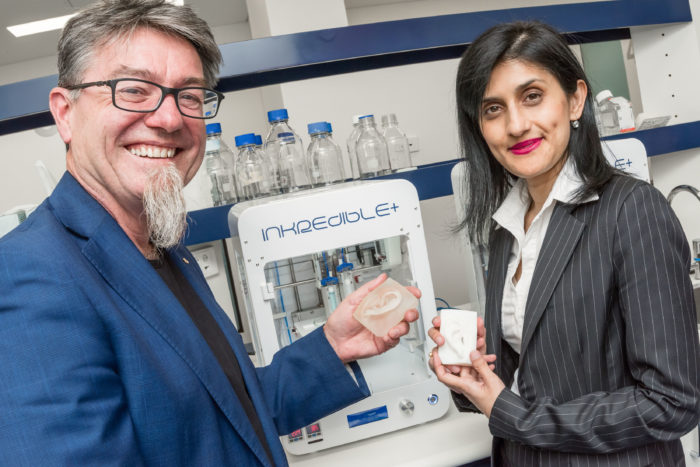News
3D printing bone tissue
Jun 28 2022
New emerging technologies and innovations for surgery are indeed providing benefits, but what about risks?

A new discussion paper that came about from a collaborative event with clinicians and scientists across NSW looks to shed some light on this very question, with contributions from ACES Director Prof Gordon Wallace and frequent ACES collaborator A/Prof Payal Mukherjee.
The now published paper offers a surgical perspective on proposed new regulatory changes for 3D technology, focusing on surgery and new technology – and the need for new changes to custom made devices.
Contributor to the paper, Payal Mukherjee, who is an Ear, Nose and Throat (ENT) Surgeon from the Royal Prince Alfred Hospital in Sydney, believes this is an important topic and one we should be having.
“3D printing is a disruptive technology. It has made us all dramatically rethink the whole definition of a medical device and many of these applications are making tangible clinical impact now,” Payal said.
“While Australia is leading the world in the next generation of such personalised medical implants with Bioprinting, it is important that we realise that without a strong and interconnected partnership with all stakeholders, such innovation will take a long time to reach patients.
“In recognition of this, the RACS NSW state committee organised a collaborative event in their Sydney offices with clinicians and scientists across NSW leading research in this area, along with representation from TGA, Hospital CEO’s, ACI, Patent Lawyers, Health Economists, Medical Service Advisory Committee and other stakeholders to discuss the current and future implications of new regulatory rules proposed by the TGA and its effect on various aspects of the health system.
“The outcome of that evening was published in this discussion paper in the ANZ journal of surgery, the leading surgical journal of the Australasian Surgical Community, to disseminate this information to a larger community as well as to the TGA, government and the important stakeholders.”
Read the paper here and to learn more about 3D printing and to discover what bioprinting can do now and in the future, join our free online course with Prof Gordon Wallace.
You can also read about Prof Gordon Wallace and A/Prof Payal Mukherjee collaboration on 3D Alek, a customised bioprinter now based at RPA Hospital to treat microtia, here.













